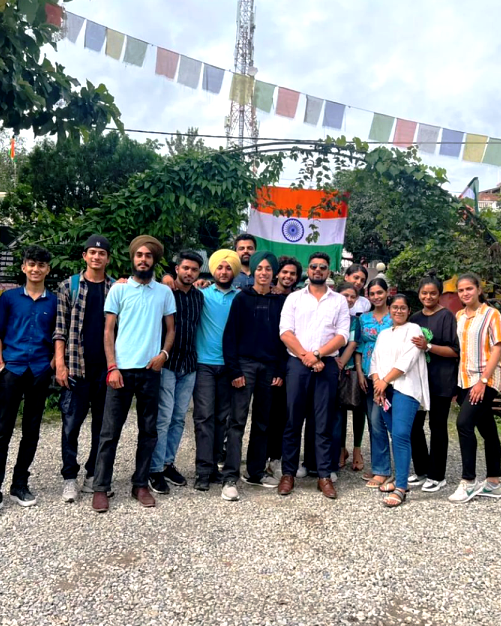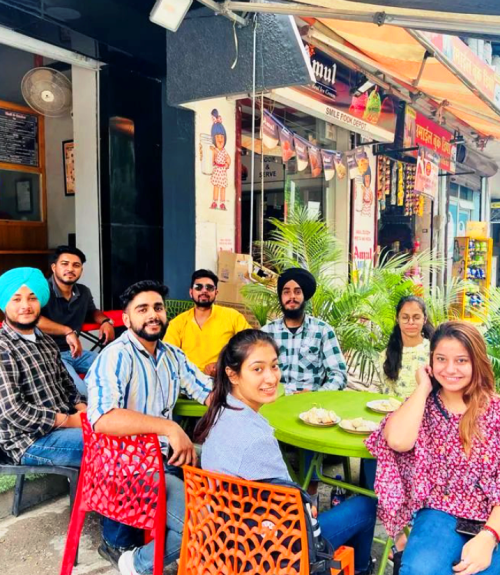PART 1
READING PASSAGE 1
You should spend about 20 minutes on Questions 1 -13, which are based on Reading Passage 1 below
India’s Modern Women
The country’s younger generation is shedding submissive attitudes, wants careers, and longs for wealth. And marketers are paying attention. When the first American music videos and popular TV shows began appearing in Indian homes in the early 1990s thanks to satellite and cable, many pundits predicted Indian society would never be the same. For the first time, female viewers saw independent, successful women and fun, sensitive guys. Sex and divorce were openly discussed in these TV imports and couples kissed passionately – then still a taboo in Indian TV shows and movies.
Indeed, the impact on younger generations of Indian women has been profound. Whereas Indian women traditionally have been submissive to parents and husbands and valued frugality and modesty, a number of sociological studies show that young Indian females now prize financial independence, freedom to decide when to marry and have children, and glamorous careers. A generation back, women would sacrifice themselves and believed in saving. Today, it is spend, spend, spend. It is OK for a woman to want something for herself, and people will accept it if she goes out into a man’s world making a statement.
Because today’s young women are the key consumer group of tomorrow, these shifts have big implications for marketing companies. And the trends come out clearly in two recent studies. One study examined 3,400 unmarried women aged 19-22 of different income and social levels. Altogether, the project involved 40 focus groups in five large urban areas and five smaller cities. In some cases, the researchers lived with the women for a while to study them more closely. The researchers supplemented this data with interviews of journalists, teachers, and psychologists.
Among the findings:
– Guilt-free materialism. 51% of young single women in major urban areas say it is necessary to have a big house and big car to be happy. In smaller cities, 86% agreed with this statement. This shows that the less women have, the greater are their aspirations. One woman interviewed was making just $200 a year but said she wants to own a jet plane. A typical comment in recent interviews was, ‘I want money, fame, and success.’
– Parental ties. Traditionally, parents regarded girls as somebody else’s future property. They arranged marriages for their daughters, and then the daughters would go away and take care of their in-laws, so parents needed and doted on sons. However, today’s young women are rebelling against that. 67% say they plan to take care of their parents into their old age – and that means they need money. The company Unilever played on that sentiment with a recent controversial – but successful – ad for its Fair and Lovely line of beauty products. A daughter came home and found that her parents had no sugar for coffee because they couldn’t afford it. She became an airline hostess after using the Fair and Lovely products to make her beautiful. She then visited her parents and took them to a first-class restaurant.
– Marital freedom. Now, many women say they will marry when ready – not when their parents decide to marry them off. 65% say dating is essential, and they also want to become financially independent before they marry. 76% say they want to maintain that independence afterwards. 60% say they will decide how to spend their own salaries. What is more, 76% say they will decide when to have children. They now regard this as the woman’s decision completely. In big metro areas, 24% say they never want children, and that number reaches 40% in smaller cities.
– Individualism. Female role models in Indian culture used to personify perfection. Now, 62% of girls say it is OK if they have faults and that people see them. They do not want to be seen as Mrs. Perfect. Popular TV role models are like Phoebe in ‘Friends’ – women who commit blunders.
– Careerism. A decade ago, most young women saw themselves as housewives. After that, most said they wanted to be teachers or doctors. If they had a profession at all, it had to be a noble cause. Now, it is about glamour, money, and fame. A surprising 45% of young single females say they would like to be journalists. This may be because prominent female Indian journalists, especially TV reporters, are seen as very glamorous. Another 39% say they would like to be managers, 38% are interested in design, and 20% think they want to be teachers. Interestingly, 13% say they would like to be in the military. The percentage of those saying they want to be a full-time housewife is minuscule.
– Modern husbands. The relationship with the husband used to be one of awe. Now, women want a partner and a relationship of equals. A recent Whirlpool ad shows a man washing the family clothes before his wife comes home from work, while a Samsung home appliance ad shows a husband and wife cooking together.
Questions 1-4
The text refers to 6 main findings when young Indian women were surveyed.
Which finding contains each of the following pieces of information?
Young Indian women who want more tend to be poorer.
Few young Indian women want to be housewives.
Most young Indian women want to take care of their retired parents.
Most young Indian women want to be financially independent.
Questions 5-8
Complete the following sentences using NO MORE THAN THREE WORDS from the text for each gap.
are freely talked about on American TV shows.
Young women are considered to be the future’s most important by many companies.
Most young Indian women surveyed agree that before marriage is necessary.
In the past, young Indian women who wanted careers were most likely to consider teaching or becoming doctors because each of these is considered to be
Questions 9-13
Do the following statements agree with the information given in Reading Passage 1?
In boxes 9 – 13 on your answer sheet, write
| TRUE. | if the statement agrees with the information | |
| FALSE. | if the statement contradicts the information | |
| NOT GIVEN. | If there is no information on this |
9.TRUEFALSENOT GIVEN The effect of American culture on young Indian women was not forecast when satellite and cable TV arrived in India.
10.TRUEFALSENOT GIVEN Researchers used three methods to get their data.
11.TRUEFALSENOT GIVEN Most young Indian women are aiming for perfection.
12.TRUEFALSENOT GIVEN Most of the best journalists on TV in India arc women.
13.TRUEFALSENOT GIVEN Modern men and women in India cook together.
PART 2
READING PASSAGE 2
You should spend about 20 minutes on Questions 14 – 26, which are based on Reading Passage 2 below.
Childhood Obesity
A. If a child becomes obese, their body processes can change. Some of these may be difficult or even impossible to alter in adulthood. Fat cells are created in the first few years of life. If fat is stored quickly, more fat cells are created. So an obese child can have up to three times as many as a normal child. Eventually, fat cells stop multiplying, and an adult has a fixed number for the rest of their life. The existing cells simply swell or shrink to accommodate more fat. The amount of fat the body wants to store is thought to be proportional to the total number of fat cells. So if you were overweight as a child, your body is programmed to carry more fat. This does not mean that you cannot lose weight through diet and exercise, but it will be harder.
B. Few health problems are observed in obese children, but they may develop conditions that cause problems later in life, such as high blood pressure. They may also suffer from ‘sleep apnoea’. When this happens, soft tissue in the throat blocks the airways during sleep. This can stop their breathing for up to a minute. This process can happen hundreds of times a night, leading to heart disease, memory problems, headaches, and tiredness. Some obese children may develop diabetes. Normally, this condition only starts much later in life. When it strikes, the body stops being able to process sugar properly, and the cells are starved of energy. Diabetes cannot be cured, but it can be treated. It may lead to problems such as nerve damage, heart disease, kidney disease, and blindness. Children with this condition will have to live with it all. their lives, increasing the chance of problems.
C. Negative body image can cause depression and social problems – overweight children are often teased. Low self-esteem may not directly affect physical health, but it is actually the biggest problem obese children meet in everyday life. It may even lead to ‘comfort eating’ (eating to feel good), making the situation even worse. If modern-day culture placed less emphasis on the ‘perfect body’, then at least one set of problems associated with obesity would disappear.
D. Although the causes are not yet completely understood, it is clear to scientists that both genes and the environment play a role, The recent increase in obesity in many countries around the world seems to be linked to environmental factors, Firstly, many people are much less physically active nowadays. Secondly, fatty and sugary foods are more accessible to more people. Thirdly, average portion sizes have become larger as people have more food to eat and restaurants, particularly fast food ones, serve larger portions for relatively little extra money. Fourthly, calories per mouthful of food have increased.
E. Traditionally, children all over the world have been forced by their parents to finish all the food that is on their plate. Don’t force children to eat more when they say they are full – otherwise they could lose their ability to naturally regulate what they eat. Wait a few minutes before serving a second portion of food at mealtimes. It takes some time for the messages that tell us we have had enough to eat to reach the brain. Another global tradition is that of giving children their favourite food as a reward for good behaviour or good grades at school. Using food as a reward is never a good idea because your child will learn to value these particular ‘treat’ foods and may turn to food for comfort. Use non-food rewards instead – they don’t need to be large material rewards. One of the best motivators is praise! Don’t tell your child off for being fat. Your child may already feel upset about their weight. Telling them off will only make them feel worse and may add to the problem if they then turn to food for comfort. Don’t single out your child as the one with the problem. Introduce healthier meals to the whole family. This way, everyone can make healthy changes to their lifestyle.
F. It is not worth forbidding fattening foods, because forbidding certain foods can make them seem more attractive to children. Teach your child about the health value of foods, particularly those that are rich in vitamins and nutrients. Make your home a healthy food zone. Fill up the fruit bowl instead of buying biscuits and crisps. Remember that your child is likely to model themselves on your behaviour, so choose healthy food options whenever possible. Offering a child a choice of food is generally not a good idea. Research has shown that when there is more choice available, we tend to eat more. Even the sight or smell of tempting food can override the body’s natural mechanism of regulation, so we eat when we’re not hungry. If you do decide to offer your child a choice, keep the options to an absolute minimum.
G. Weight management camps can be a good way to treat obesity. One of the problems is keeping off the weight that kids lose at such camps. If the child comes home and none of the family members have altered their eating habits, improvements may be difficult to sustain. Again, lead by example! An increasing number of parents ask their doctors about surgery (e.g. liposuction) to tackle obesity. If a child has massive obesity and his or her health is being put at serious risk, then all options have to be considered. Surgical treatments have shown good results in adults, but there are serious risks. Performing surgery on children would raise some difficult issues. This option should really only be considered when all others have been exhausted,
H. Parents of even young children can make sure the family changes to a healthy lifestyle rather than targeting weight loss specifically. Children grow at different rates, and many overweight children will ‘grow out of it’ as they grow taller. Few treatments are targeted at children under the age of seven years. From age eight to ten, a child who is obese should have a medical evaluation to assess the severity of the problem. The older your child is, the less likely they are to grow out of it. A 15-year-old who is overweight is likely to remain so in adulthood.
Questions 14-17
The text has 8 paragraphs (A – H).
Which paragraph does each of the following headings best fit?
14.ABCDEFGH Feeling bad about yourself
15.ABCDEFGH Reducing weight
16.ABCDEFGH Age is a factor
17.ABCDEFGH Fat cells
Questions 18-22
According to the text, FIVE of the following statements are true.
Write the corresponding letters in answer boxes 18 to 22 in any order.
AAdults do not gain fat cells.
BDiabetes is not a permanent problem for a person.
CLow self-esteem is a major problem.
DBeing obese is generally considered to be partly genetic.
EMessages about food requirement go from the stomach to the brain instantly.
FParents should take the lead by buying healthy foods.
GPerforming liposuction on children is a good idea.
HSome young children appear overweight when they are short.
Questions 23-26
Forbidding foods is bad because children
Asleep apnoea.
Bdiabetes.
Clow blood pressure.
Alack of exercise.
Blarger portions of food at restaurants.
Ccomfort eating.
Ausing food as a reward.
Bnot telling children to finish their dinners.
Cwaiting before serving second portions of food.
Awill want them even more.
Bshould be offered a choice of food.
Cshould be treated equally.
PART 3
READING PASSAGE 3
You should spend about 20 minutes on Questions 27 – 40, which are based on Reading Passage 3 below.
Learning about the Past
If the past is a foreign country, the version that used to be taught in Irish schools had a simple landscape. For 750 years after the first invasion by an English king, Ireland suffered oppression. Then at Easter 1916, her brave sons rose against the tyrant; their leaders were shot but their cause prevailed, and Ireland (or 26 of her 32 counties) lived happily ever after. Awkward episodes, like the conflict between rival Irish nationalist groups in 1922 – 23, were airbrushed away. “The civil war was just an embarrassment, it was hardly mentioned,” says Jimmy Joyce, who went to school in Dublin in the 1950s.
These days, Irish history lessons are more sophisticated. They deal happily with facts that have no place in a plain tale of heroes and tyrants: like the fact that hundreds of thousands of Irish people, Catholic and Protestant, fought for Britain during the two world wars. Why the change? First, because in the 1980s, some people in Ireland became uneasy about the fact that a crude view of their national history was fuelling a conflict in the north of the island. Then, came a fall in the influence of the Catholic church, whose authority had rested on a deft fusion between religion and patriotism. Also at work was an even broader shift: a state that was rich, confident, and cosmopolitan saw less need to drum simple ideas into its youth, especially if those ideas risked encouraging violence.
As countries all over the world argue over “what to tell the children” about their collective past, many will look to Ireland rather enviously. Its seamless transition from a nationalist view of history to an open-minded one is an exception. A history curriculum is often a telling sign of how a nation and its elites see themselves: as victims of colonialism or practitioners (either repentant or defiant) of imperial power. In the modern history of Mexico, for example, a big landmark was the introduction, 15 years ago, of textbooks that were a bit less anti-American. Many states still see history teaching, and the inculcation of foundation myths, as a strategic imperative; others see it as an exercise in teaching children to think for themselves. The experience of several countries suggests that, whatever educators and politicians might want, there is a limit to how far history lessons can diverge in their tone from society as a whole.
Take Australia. John Howard, the conservative prime minister, has made history one of his favourite causes. At a “history summit” he held last August, educators were urged to “reestablish a structured narrative” about the nation’s past. This was seen by liberal critics as a doomed bid to revive a romantic vision of white settlement in the 18th century. The romantic story has been fading since the 1980s, when a liberal, revisionist view came to dominate curricula: one that replaced “settlement” with “invasion” and that looked for the first time at the stories of aborigines and women. How much difference have Australia’s policy battles made to what children in that cosmopolitan land are taught? Under Mr. Howard’s 11-year government, “multicultural” and “aboriginal reconciliation”, two terms that once had currency, have faded from the policy lexicon, but not from classrooms. Australia’s curricula are controlled by the states, not from Canberra. Most states have rolled Australian history into social studies courses, often rather muddled. In New South Wales, where the subject is taught in its own right, Mr. Howard’s bid to promote a patriotic view of history meets strong resistance.
Judy King, head of Riverside Girls High School in Sydney, has students from more than 40 ethnic groups at her school. “It’s simply not possible to present one story to them, and nor do we,” she says. “We canvass all the terms for white settlement: colonialism, invasion, and genocide. Are all views valid? Yes. What’s the problem with that? If the prime minister wants a single narrative instead, then speaking as someone who’s taught history for 42 years he’ll have an absolute fight on his hands.” Tom Ying, head of history at Burwood Girls High School in Sydney, grew up as a Chinese child in the white Australia of the 1950s. In a school where most students are from non-English-speaking homes, he welcomes an approach that includes the dark side of European settlement. “When you have only one side of the story, immigrants, women, and aborigines aren’t going to have an investment in it.”
Australia is a country where a relatively gentle (by world standards) effort to re-impose a sort of national ideology looks destined to fail. Russia, by contrast, is a country where the general principle of a toughly enforced ideology, and a national foundation story, still seems natural to many people, including the country’s elite. In a telling sign of how he wants Russians to imagine their past, President Vladimir Putin has introduced a new national day – November 4 – to replace the old Revolution Day holiday on November 7. What the new date recalls is the moment in 1612 when Russia, after a period of chaos, drove the Catholic Poles and Lithuanians out of Moscow. Despite the bonhomie of this week’s 25-minute chat between Mr. Putin and Pope Benedict XVI, the president is promoting a national day which signals “isolation and defensiveness” towards western Christendom, says Andrei Zorin, a Russian historian.
In South Africa, where white rule collapsed, the authorities seem to have done a better job at forging a new national story and avoiding the trap of replacing one rigid ideology with another. “The main message of the new school curriculum is inclusion and reconciliation,” says Linda Chisholm, who designed post-apartheid lessons. “We teach pupils to handle primary sources, like oral history and documents, instead of spoon-feeding them on textbooks,” adds Aled Jones, a history teacher at Bridge House School in Cape Province. It helps that symbols and anniversaries have been redefined with skill. December 16 was a day to remember white settlers clashing with the Zulus in 1838; now it is the Day of Reconciliation.
Questions 27-30
For each question, only ONE of the choices is correct.
Write the corresponding letter in the appropriate box on your answer sheet.
27. The Irish Civil War was not taught much in Ireland in the past because
Ait didn’t fit in with the history of the Irish fighting British rule.
Bthe Irish people couldn’t understand why it happened.
Cthe Irish didn’t want to anger the British.
28. John Howard favours teaching history
Aas it was taught in Australia before the 1980s.
Bas it is taught in Australia now.
Cas it is taught in most other countries.
29. The new Russian holiday appears to demonstrate that Russia is
Abecoming less authoritative
Bstrongly enforcing a link between ideology and history.
Cbecoming opposed to the influence of western Christianity.
30. History in South Africa is now taught differently because
Aof the collapse of apatheism.
Bof the collapse of rule by white people.
Cteachers are better than before.
Questions 31-35
Complete the following sentences using NO MORE THAN THREE WORDS from the text for each gap.
Many Irish people thought a simple view of history was in Northern Ireland.
The things that are taught in history classes often tell us how countries and people
The terms “multicultural” and “aboriginal reconciliation” can still be found in Australian
Judy King says John Howard would like rather than look at history from different standpoints.
In South Africa, changing a for another has been avoided.
Questions 36-40
Do the following statements agree with the information given in Reading Passage 3?
In boxes 36 – 40 on your sheet, write
| TRUE. | if the statement agrees with the information | |
| FALSE. | if the statement contradicts the information | |
| NOT GIVEN. | If there is no information on this |
36.TRUEFALSENOT GIVEN As Ireland became richer, Irish people became less interested in simple ideas.
37.TRUEFALSENOT GIVEN Most countries believe learning about history should allow students to think for themselves.
38.TRUEFALSENOT GIVEN The meanings of the words “settlement” and “invasion” are not the same.
39.TRUEFALSENOT GIVEN A foundation story is an important part of history classes in Russia.
40.TRUEFALSENOT GIVEN The new South African history curriculum aims to include different standpoints and bring people together.








